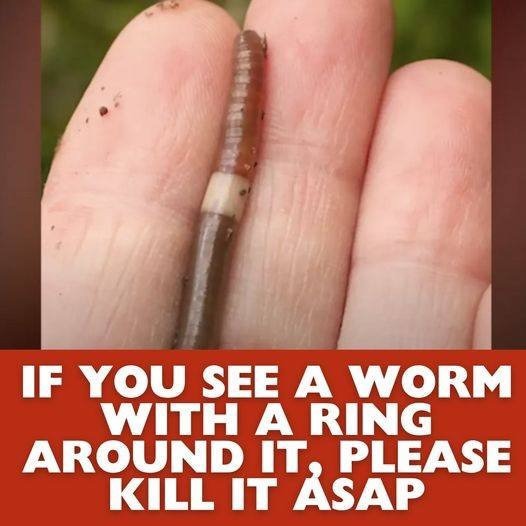Jumping Worms In The Garden? Here’s What You Must Do

Sightings of jumping worms have been reported recently in New Brunswick, Nova Scotia, and southern Ontario
Gardeners in these areas are facing difficulties as a result of the invasive worms’ notable proliferation via horticulture.
Because jumping worms alter the soil, they pose a major danger to forest ecosystems.

They eat organic material quickly, and their castings, or excrement, change the structure of the soil and make it less able to retain water. Additionally, jumping worms alter the microbial and fungal populations in the soil by increasing its nitrogen content.
Variations in the fungi and bacteria that inhabit the soil might impact the kinds of plants that can thrive and spread, which could have a domino effect on wildlife.
Jumping worms should therefore be prevented from entering forest environments.
How to identify a jumping worm
When adults are at their largest, which is between August and September, this is the best time to spot jumping worms.
They will typically gather in big numbers in the topsoil, which is where you can locate them.
These worms are known for their furiously thrashing behavior, which occurs when they are startled and makes them highly active.
Jumping worms have smooth, glossy skin, in contrast to European earthworm species, which are sticky or squishy to the touch. Additionally, unlike other earthworm species, they have a distinctive clitellum, or collar-like band, around their body that is closer to their head and has a white or grey color.
Additionally, you can search for soil alterations such as:
- quicker than typical mulch breakdown
- variations in the texture of the soil. Jumping worm castings, or excrement, have a texture similar to coffee grinds and give the soil a more granular appearance.
Mustard Pour
Use a mustard pour to draw jumping worms to the surface so you can report them if you think they may be in your garden.
Take these easy actions:
- Combine 4.5 liters of water with 1/3 cup of ground yellow mustard seeds.
- After clearing a section of ground, slowly cover it with the mixture.
- Watch for worms to ascend to the surface so they may be recognized.
What to do in your yard if you discover jumping worms

Regretfully, there isn’t much you can do to totally eradicate jumping worms when they develop in your garden.
Nonetheless, a few physical management techniques, like hand-removing the worms or heating your soil by encasing it in plastic sheets, might work to lower the number.
If you are aware that you have jumping worms in your garden, do not share plants or soil with other gardeners.
This can disperse them to other areas and raise the possibility of infection for nearby natural ecosystems and other gardeners.
When a jumping worm is found, it should be killed and disposed of. Isopropyl alcohol is the fastest way to put an adult jumping worm to sleep.
Heat is another useful technique that also affects adults and cocoons.
Adult worms should be sealed in a clear plastic bag and kept in direct sunlight for a few days. If you find jumping worms in soil or other horticultural material, throw it out in a sealed plastic bag and place it in the sun for several days to kill any worms or cocoons.
After that, the bag can be disposed of in the trash. View this helpful Gardeners Guide from Ontario Master Gardeners to learn more.
Boots and equipment
The tiny cocoons of jumping worms are hard to discern from soil.
This renders them vulnerable to unintentional transportation on footwear or outdoor gear.
Jumping worms can be prevented from spreading by thoroughly cleaning your equipment both before and after relocating to a new location, such as during hiking.
If you are aware that you have jumping worms in your garden, this is very crucial.
To find out more about how you can enjoy nature and stop the spread of unwanted species like jumping worms, visit the Play, Clean, Go website.
Reporting
The management of the jumping worm population in Canada necessitates early detection and rapid reaction (EDRR) due to its relatively recent introduction.
Jumping worm observations, along with other invasive species you might encounter in your yard, can be reported at http://www.eddmaps.org or by installing the EDDMapS app to your iPhone or Android smartphone at https://apps.bugwood.org.
By tracking the forefront of infestations and identifying critical areas for control and outreach, reports such as this one assist experts in the field of invasive species management.
By working together, we can ensure the safety of our woods while yet having an abundant gardening season.
